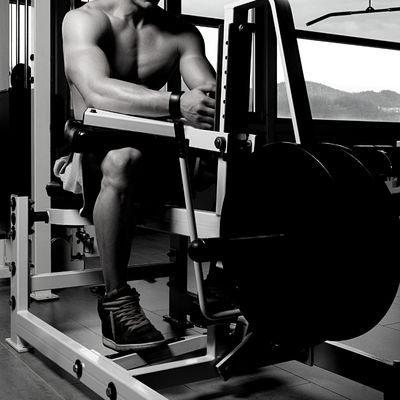Sculpt Your Calves: A Guide to Calf Exercises
Calves are some of the hardest muscles to grow and often a point of embarrassment and ridicule for the average gym goer. This is unfortunate because regardless of how often you may hit leg day, the size of your calves may not reflect that effort!
That’s because calves are often left out in many of the major compound movements and are only ever really targeted through isolation exercises, as you’ll see later on in the article. The other issue is, even when targeted, the results may not be as immediate and impressive as the other muscle groups that we’re used to working out.
These are large muscles that are constantly being used throughout the day as you stand and walk, so be prepared to put in the time and work to get them to grow!
The 2 Most Effective Calf Exercises
Seated Calf Raises
Seated Calf Raises
If your gym has a seated calf raise machine, this is one of the best bets in helping you grow your calves. It effectively targets the soleus muscle, the muscle lying underneath the gastrocnemius, and overtime will make your calves physically bigger.
Much like how training triceps will result in larger arms than training biceps, training the soleus will result in bigger calves than the gastrocnemius due to the same principle.
Calf Raises
The standing calf raise, and all the potential ways to perform then, is the other tried and true method of sculpting the calves of your dream. Although a more heavy bias towards the gastrocnemius than the soleus, over time you will see the results, especially with respect to the appearance and overall shape of your calves, as these are the most superficial muscles of your calves.
When performing them at the gym, the options are endless. These can be performed directly on a calf raise machine, if your gym has one, on a leg press, with dumbbells, and barbells, elevated or on the ground, etc.
Calf Exercises to Do at Home
With working out calves at home, it is essentially mirroring the movements that would be performed at home. Of course, you typically won’t have a seated or standing calf raise machine lying around, so your best bet is to find some workarounds. The first crucial step is finding a safe, elevated surface.
An easy one is a set of stairs, somewhere where you can elevate yourself off the ground and allow yourself to go through a full range of motion to adequately stimulate the calves. It’s probably a little more difficult to load up weights for a home edition of the seated calf raise, so the standing calf raise would be the more reliable go to.
Weight can be held while performing the movement, but ensure that it can be done safely. With both of these movements, you can perform it one leg at a time for a heavier focus/challenge or both together.
Calf Exercises to Do with Resistance Bands
Why reinvent the wheel? These resistance band exercises, much like the home editions, are exact mirrors of the ones performed at the gym. With bands, performing the seated calf raise is a bit easier to do vs. the standing calf raise. To perform the seated calf raise, find a seat and place a surface that will elevate the feet off the ground. Loop (potentially double looping) the resistance band around the surface of the feet that will remain in contact with the elevated surface and the knee.
This should provide tension throughout the entirety of the movement allowing you to train the calves. Same with the standing calf raise, find an elevated surface, loop the band around the area of the foot remaining in contact with the surface and a safe anchor, allowing tension throughout the movement. These can both be performed one leg at a time or both simultaneously as well.
Resistance bands can also assist with stretching of the calves.
Things to Consider When Doing Calf Exercises
Calves take time to grow! It won’t happen overnight and it’s important to keep at it regardless of the lack of results. The other thing to consider is adequate rest. You totally could just blast calves every single time you workout out/every single day, but it should be at the right intensity.
A lot of people who carried a significantly high amount of body weight and lost it over the years may retain large, powerful calves, due to the calves being subjected to a larger load (the body weight) under the constant intensity of standing and walking, as mentioned above. So if the decision is to work the calves on a more frequent basis, do so with a lower load/intensity, and if the decision is to work them at a higher load/intensity, do so on a less frequent basis.
The last thing to consider is to perform the movement at an adequate tempo. It shouldn’t be a quick, touch and go, tempo. It should be a slow and controlled motion ensuring muscle tension throughout the entirety of the movement.
If you didn’t win the genetic lottery when it comes to calves, that’s okay. With enough time, effort, and dedication, you’ll grow the calves of your dreams.

